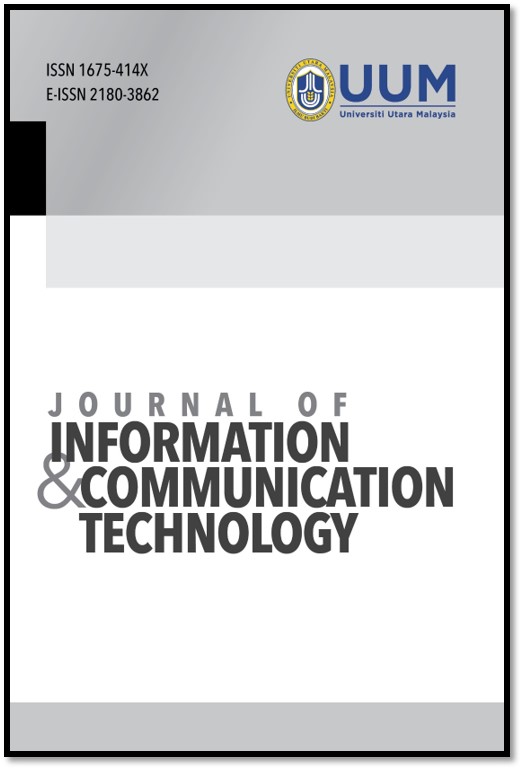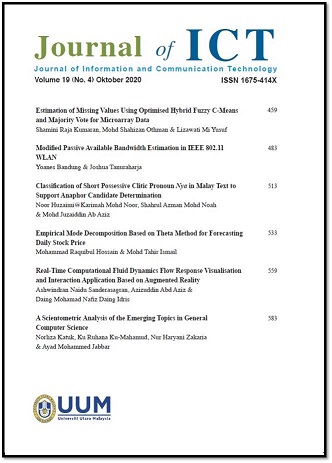LEVEL OF RESILIENCE MEASURE FOR COMMUNICATION NETWORKS
DOI:
https://doi.org/10.32890/jict2018.17.1.8247Keywords:
Level-of-resilience, stability, quality-of-service, convergenceAbstract
Our daily life applications have come to depend on communication networks to deliver services in an efficient manner. This has made it possible for an attacker to sabotage its operation. Network resiliency is concerned with the degree the network is able to bounce back to a normal operation in the face of attacks. This paper introduced a new resiliency measure, called Levelof-Resilience (LoR) for communication networks, determined by examining: (a) the Level-of-Stability-Reduction (LoSR), as measured by percentage of “IP traffic droppedâ€, (b) the eventual Level-of-Performance-Reduction (LoPR), as captured by the percentage of reduction in the application Quality-of-Service (QoS), namely latency and (c) Recovery-Time (RT), which is the time the network takes to detect and recover from an attack or a fault, as measured by convergence duration. Previous resiliency measures may only consider one aspect of the above parameters, while this measure is a composite of them. This paper showed that network topology can affect the network resilience, as indicated by the LoR metric. This measure is illustrated by comparing the resiliency level of two communication networks that served the same traffic, but differed in their network topology, under three different attack scenarios.
Metrics
Metrics Loading ...
Additional Files
Published
26-12-2017
How to Cite
Wajdi Ibrahim, M. (2017). LEVEL OF RESILIENCE MEASURE FOR COMMUNICATION NETWORKS. Journal of Information and Communication Technology, 17(1), 115–139. https://doi.org/10.32890/jict2018.17.1.8247
Issue
Section
Articles





 2002 - 2020
2002 - 2020


























